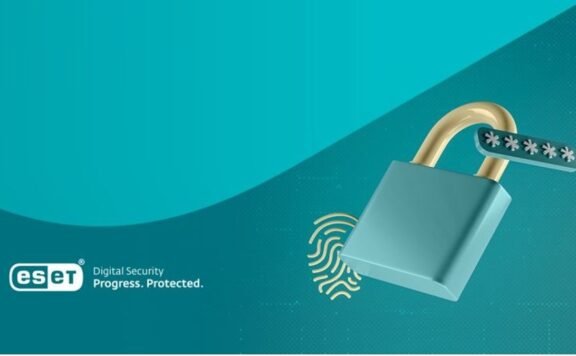The online world provides children with previously unimagined opportunities to learn and socialize, but it also opens them up to a range of hazards. André Lameiras, Security Writer from ESET explains how can you steer kids toward safe internet habits?
The way our digital lives have become entangled with our physical world has brought new, major challenges for parents, caregivers and teachers. Not only because it is essential to teach children how to read and understand information online and generally navigate the internet, but especially because of a potentially overwhelming list of risks lurking online.
As children get used to their school routines, this is the perfect time for parents and educators to guide kids and teens towards a safe digital life.
1. Setting up strong authentication
Just like adults, kids struggle with password security. You can help them by explaining why they should use strong and unique passwords – and then keep those passwords private. And that, even with their video games, a strong password will protect their game inventory from anyone trying to steal it.
Indeed, they should consider using passphrases, rather than simple and easy-to-guess words, that consists various words and types of characters and are long rather than short – but not too long or complex to memorize. Something like, “HarryPotterAnd5DinoNuggies!” is far better than, say, “berry”.
And be sure to stress that their passwords or passphrases should never be shared with anyone, as well as that an extra layer of security (aka two-factor authentication) never hurt anybody. If needed, help them set it up and so protect the online accounts that are home to their most personal data. Speaking of which …
2. Personal information is personal
While it is important to emphasize the value of our data to young kids, keep in mind that even older teenagers don’t always understand the full implications of handing over their personal information online, such as the risk of becoming victims of phishing.
Explain to them that they should never open links from anyone they don’t know, and that, if a friend sends something through a messaging app, they should always confirm whether the link was actually sent by the friend, and that it is valid and safe, or if it’s spam, before clicking on it. And, above all, make sure that they know that they should never give their full names, ID numbers, addresses or banking details to anyone at all.
As a parent or educator, consider the risks. It is very likely that kids and teenagers will break rules. So let them know that, if this happens for some reason, they should never disclose what schools they attend, or their home addresses.
3. Their data matters
Growing up in the digital age means having all your data online, be it on a government platform or a parent’s social media profile that shows off their little ones. They’re already using face recognition systems, storing health data collected by wearables, having their grades on an online database, and giving their personal details to register on video game platforms. There’s no escape.
On the other hand, it is important that they understand how this data can be used. Explain that it is valuable for businesses to profile them, for social media to target them for ads, for governments that want to collect information on their citizens and, ultimately, that our data is a source of income for hackers that can use it for fraudulent activity.
4. Sharing isn’t always caring
In a way, mobile devices such as laptops, phones and tablets may have added new meaning to the concept of “personal computer.” But computers were built to be used by individual users, rather than shared. Teenagers may not know this and may be prone to sharing their devices with friends when showing pictures, playing mobile video games or “just checking something on TikTok.”
However, even if this does happen, it should always be done under their supervision. Not just for a matter of safety to avoid not-so-funny pranks, but also to protect their private information. And, just in case, also remind them never to lend their devices to someone they don’t know – and this is not up for debate.
5. Watching out for strangers
One more topic that parents and educators shouldn’t steer clear of is “stranger danger.” Besides telling kids not to enter a stranger’s car, remind them that the internet is just a big public place full of strangers. Explain what may happen, assuming the worst-case scenario, and how to prevent any damage.
Your kids should know that the internet is a place where people, hidden behind computers, can be mean. The more information the kids share, the greater the potential harm; in other words, the higher the likelihood that ill-intentioned adults will be able to gain and then subvert their trust and friendship or otherwise use it against them.
Teach kids to be careful, not only with people they don’t know, but also with people they know. Explain the meaning of concepts like cyberbullying and grooming to them, and how strangers take the time to build fake friendships and trick youth into sharing personal data and even sexual content, which can result in intimidation, fear, and potential physical harm.
Guide them through this wild, wild world
It can be truly challenging to navigate kids through the dangers of both the physical and the virtual world. It is hard even for grown-ups. On top of that, teenagers don’t always listen to adults’ opinions about the internet; after all, they some of them belong to the first generation of true digital natives.
To make the message stick, don’t resist or condemn them for the apps they use or the games they play; join them instead, by helping them to install those apps, and by taking the time to play the games with them. Create the accounts, share content, discuss possible dangers, and make your own experience part of the conversation.
Having said that, you may still be concerned about what kind of websites your children visit or how much time they spend online. This is where technology such as parental control software comes into play, as it can, among other things, shield kids from harmful content. Importantly, this software is best thought of as a form of care, rather than a sort of imposed control. It can be particularly useful with younger children, at least until they grow older and can fend for themselves.
Lastly, why not also plan short breaks from tech for your children and the entire family? We all sometimes get a little too hooked on screens, don’t we?





